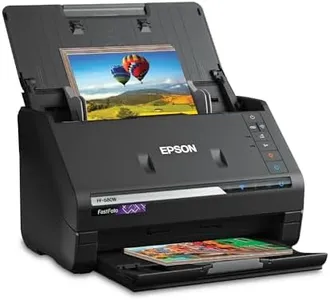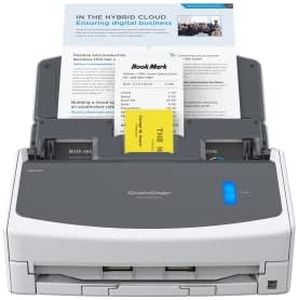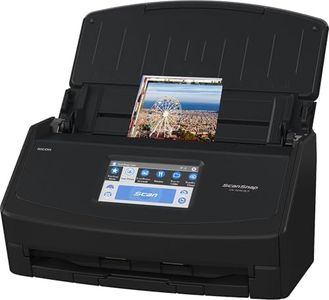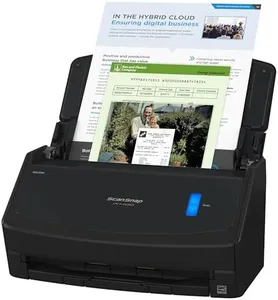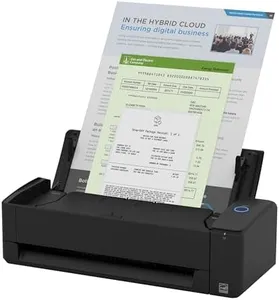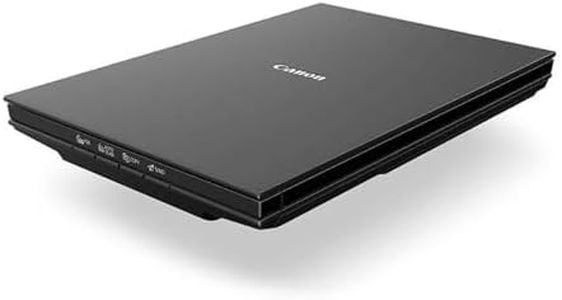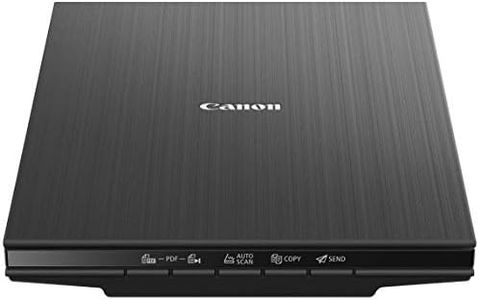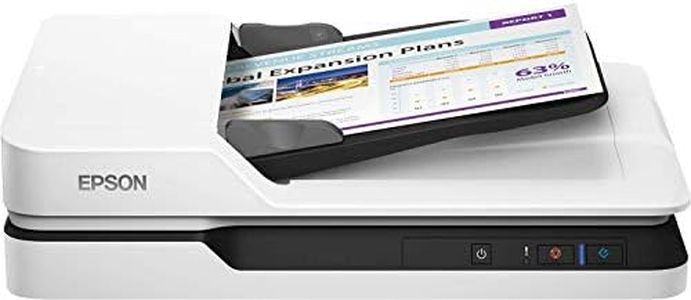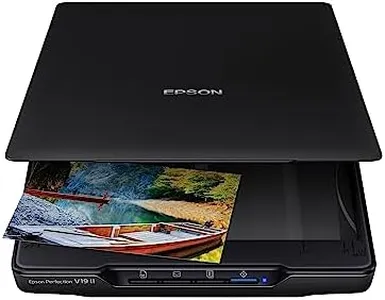We Use CookiesWe use cookies to enhance the security, performance,
functionality and for analytical and promotional activities. By continuing to browse this site you
are agreeing to our privacy policy
10 Best Usb Flatbed Scanners
From leading brands and best sellers available on the web.By clicking on a link to a third party's website, log data is shared with that third party.
Buying Guide for the Best Usb Flatbed Scanners
When choosing a USB flatbed scanner, the most important thing is to find a model that fits your specific scanning needs, whether that's for photos, documents, or artwork. Understanding the main specifications will help you pick a scanner that delivers the right balance of image quality, speed, and usability, all while making sure it's compatible with your computer. Focus on how you plan to use the scanner—occasional document scans, lots of photographic work, or archiving delicate items—and prioritize the spec categories that matter most for those tasks.Optical Resolution (DPI)Optical resolution, measured in DPI (dots per inch), tells you how many dots the scanner can capture per inch, which determines how sharp and detailed your scanned images will be. If you mainly scan text documents, a resolution of 300–600 DPI is usually enough to make everything clear and readable. For photographing or archiving images, higher resolutions like 1200 DPI or more provide better detail and allow you to enlarge photos without them getting blurry. If you only need the scanner for paperwork, it's fine to select a model with a lower DPI, but if you want to preserve photos or scan small details, choose a higher-DPI scanner.
Scan AreaThe scan area is the maximum physical size that the scanner can handle in one pass, generally expressed in inches or millimeters. Most flatbed scanners can handle standard letter size (8.5 x 11 inches) or A4 documents, which cover most everyday tasks. If you want to scan larger items like legal documents, artwork, or scrapbook pages, look for a scanner with a bigger scan area. Before buying, consider the largest item you might ever want to scan and pick a model that can accommodate it.
Color DepthColor depth tells you how many colors the scanner can capture, measured in bits, like 24-bit or 48-bit. A higher color depth means more accurate and vivid color reproduction, especially important for photos and art. If your focus is on scanning black-and-white documents, lower color depth is fine. If you want faithful scans of artwork or color images, look for a higher color depth—this is essential for anyone working with creative or archival projects.
ConnectivityUSB connectivity is the standard for most flatbed scanners, but it's worth checking which USB version is supported. Modern scanners often use USB 2.0 or 3.0, and a faster port means quicker transfer of large files, which matters if you scan a lot of high-resolution images. Make sure the scanner is compatible with your computer's ports and operating system, as some older scanners may not work with newer devices.
Scan SpeedScan speed is usually given in seconds per page or in pages per minute (ppm). Faster scanners save time if you often have a lot of pages to digitize, but for occasional use or single pages, speed is less critical. Consider this spec if you anticipate regular, high-volume scanning, such as for office work, but it can be deprioritized if you mostly scan occasionally or are more concerned with quality.
Software FeaturesScanners come with different software packages including tools for automatic image correction, optical character recognition (OCR), or file organization. Good software can make scanning easier and let you convert paper documents to searchable text. If you need to archive and organize documents, look for a scanner with reliable OCR. For photo scanning, check if the software offers dust removal, color correction, or stitching large scans together. Match the software features to what you'll actually use, rather than just picking something with lots of extras.
Physical Size and Lid DesignThe physical size and design of the lid can affect where you can put the scanner and what items you can scan. Some scanners have a bulky design or an extra-wide lid hinge that allows the lid to adjust for thick items like books or magazines. If space is limited at your desk, select a compact model, but if you want to scan bulky items, look for a scanner with a well-designed, adjustable lid.
